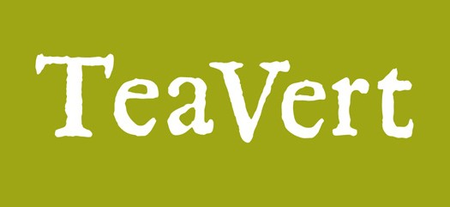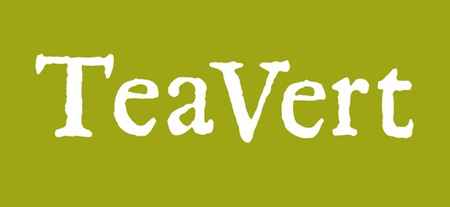Organic Darjeeling 2nd Flush Loose Leaf Tea with Bamboo Infuser
$22.00
ABOUT
"Dorje-ling" was named by the Tibetan Buddhist monks in honor of Dorje, the sacred ritual object of holy lamas that symbolizes eternal strength and constancy and a fixed axis point around which all else turns.
The 87 gardens found in the Darjeeling region produce around 9 million kilograms of tea annually. Yet it is estimated that 40 million kilograms of tea, often marked as “Pure Darjeeling,” find their way into the market each year. This counterfeit tea may be a copper-colored light tea grown and processed in Sri Lanka or Kenya, or it might be tea brought across the mountains from neighboring Nepal, Sikkim or Bhutan.
Poobong Estate, established by the British in 1899, sits on one of Darjeeling’s highest peaks, where it feels as if the sky is within the reach of your fingertips and at night the stars twinkle close to your head. The garden is located at Ghoom, which has the highest railway station in the world. The name is Tibetan for “Valley behind the Clouds” and the estate is famous for its lush, green velvet valley where orchids grow wild among the tall pine trees. Because of the altitude, the garden is enshrouded in fog and mist almost all the time, and sometimes it is difficult to find your way through the dense cloud.
The tea grows at heights ranging from 2,500 to 4,500 ft, and most of the plantation is planted with Chinese tea bushes of superior quality. The garden covers 1,000 acres but only 500 of these are under tea. Annual production is 70,000 kg of tea.
The tea bushes at Poobong were originally brought from China to the British. Some of those first bushes are still growing on the estate, but they have become very old and give very little leaf. But the quality of the original bushes is still excellent and used in the nursery.
After 15 months, these new plants are set out in the field and then left to mature for six or seven years before any plucking is carried out. The Chinese bushes originally planted more than a century ago are supplied by the estate to different gardens as a regular course of business for which the estate is famous for. The renowned garden, Temi in Sikkim, owes a debt of gratitude for its plants to Poobong.
DESCRIPTION
No other tea in the world carries the distinctive muscatel overtones and bright coppery color of a tea from the Darjeeling region of North Eastern India. Its appearance, liquor and aroma are instantly recognizable by tea drinkers worldwide. A Darjeeling China bush will not produce the same muscatel tones if taken from its nest on the mountain and planted in the lowlands of Dooars or Assam. Darjeeling teas owe their unique flavor partly to the type of bush and partly to the climate.
Second Flush Darjeeling teas are harvested in the end May and early June depending upon weather and climate, and are found to have more color in cup and a stronger flavor. The liquor has more body, unlike the first flush teas.
This single-estate tea is hand picked from the second growth of new leaves on the tea bushes lining the beautiful slopes of the Poobong Estate.
PREPARATION
Heat Water to 212 F, steep 5 minutes.
OUR ENVIRONMENTALLY FRIENDLY PACKAGING:
Our hand-crafted packaging is simple, visually sophisticated, and sustainable. It reflects our values, and the values of our customers.
All our packaging is 100% recyclable and biodegradable, made of paper and non-toxic soy ink. We would like to make sure that you pay for quality tea, and nothing more.
Each canister includes a reusable bamboo tea infuser. The infuser is hand made from natural bamboo. We recommend using separate infuser’s for each type of tea because it will absorb the fragrance of the tea.
Each container includes approximately thirty-five one-teaspoon servings. Some of our teas can be infused as many as 3-6 times. The weight of the tea ranges from 50-100 grams depending on volume.
"Dorje-ling" was named by the Tibetan Buddhist monks in honor of Dorje, the sacred ritual object of holy lamas that symbolizes eternal strength and constancy and a fixed axis point around which all else turns.
The 87 gardens found in the Darjeeling region produce around 9 million kilograms of tea annually. Yet it is estimated that 40 million kilograms of tea, often marked as “Pure Darjeeling,” find their way into the market each year. This counterfeit tea may be a copper-colored light tea grown and processed in Sri Lanka or Kenya, or it might be tea brought across the mountains from neighboring Nepal, Sikkim or Bhutan.
Poobong Estate, established by the British in 1899, sits on one of Darjeeling’s highest peaks, where it feels as if the sky is within the reach of your fingertips and at night the stars twinkle close to your head. The garden is located at Ghoom, which has the highest railway station in the world. The name is Tibetan for “Valley behind the Clouds” and the estate is famous for its lush, green velvet valley where orchids grow wild among the tall pine trees. Because of the altitude, the garden is enshrouded in fog and mist almost all the time, and sometimes it is difficult to find your way through the dense cloud.
The tea grows at heights ranging from 2,500 to 4,500 ft, and most of the plantation is planted with Chinese tea bushes of superior quality. The garden covers 1,000 acres but only 500 of these are under tea. Annual production is 70,000 kg of tea.
The tea bushes at Poobong were originally brought from China to the British. Some of those first bushes are still growing on the estate, but they have become very old and give very little leaf. But the quality of the original bushes is still excellent and used in the nursery.
After 15 months, these new plants are set out in the field and then left to mature for six or seven years before any plucking is carried out. The Chinese bushes originally planted more than a century ago are supplied by the estate to different gardens as a regular course of business for which the estate is famous for. The renowned garden, Temi in Sikkim, owes a debt of gratitude for its plants to Poobong.
DESCRIPTION
No other tea in the world carries the distinctive muscatel overtones and bright coppery color of a tea from the Darjeeling region of North Eastern India. Its appearance, liquor and aroma are instantly recognizable by tea drinkers worldwide. A Darjeeling China bush will not produce the same muscatel tones if taken from its nest on the mountain and planted in the lowlands of Dooars or Assam. Darjeeling teas owe their unique flavor partly to the type of bush and partly to the climate.
Second Flush Darjeeling teas are harvested in the end May and early June depending upon weather and climate, and are found to have more color in cup and a stronger flavor. The liquor has more body, unlike the first flush teas.
This single-estate tea is hand picked from the second growth of new leaves on the tea bushes lining the beautiful slopes of the Poobong Estate.
PREPARATION
Heat Water to 212 F, steep 5 minutes.
OUR ENVIRONMENTALLY FRIENDLY PACKAGING:
Our hand-crafted packaging is simple, visually sophisticated, and sustainable. It reflects our values, and the values of our customers.
All our packaging is 100% recyclable and biodegradable, made of paper and non-toxic soy ink. We would like to make sure that you pay for quality tea, and nothing more.
Each canister includes a reusable bamboo tea infuser. The infuser is hand made from natural bamboo. We recommend using separate infuser’s for each type of tea because it will absorb the fragrance of the tea.
Each container includes approximately thirty-five one-teaspoon servings. Some of our teas can be infused as many as 3-6 times. The weight of the tea ranges from 50-100 grams depending on volume.

